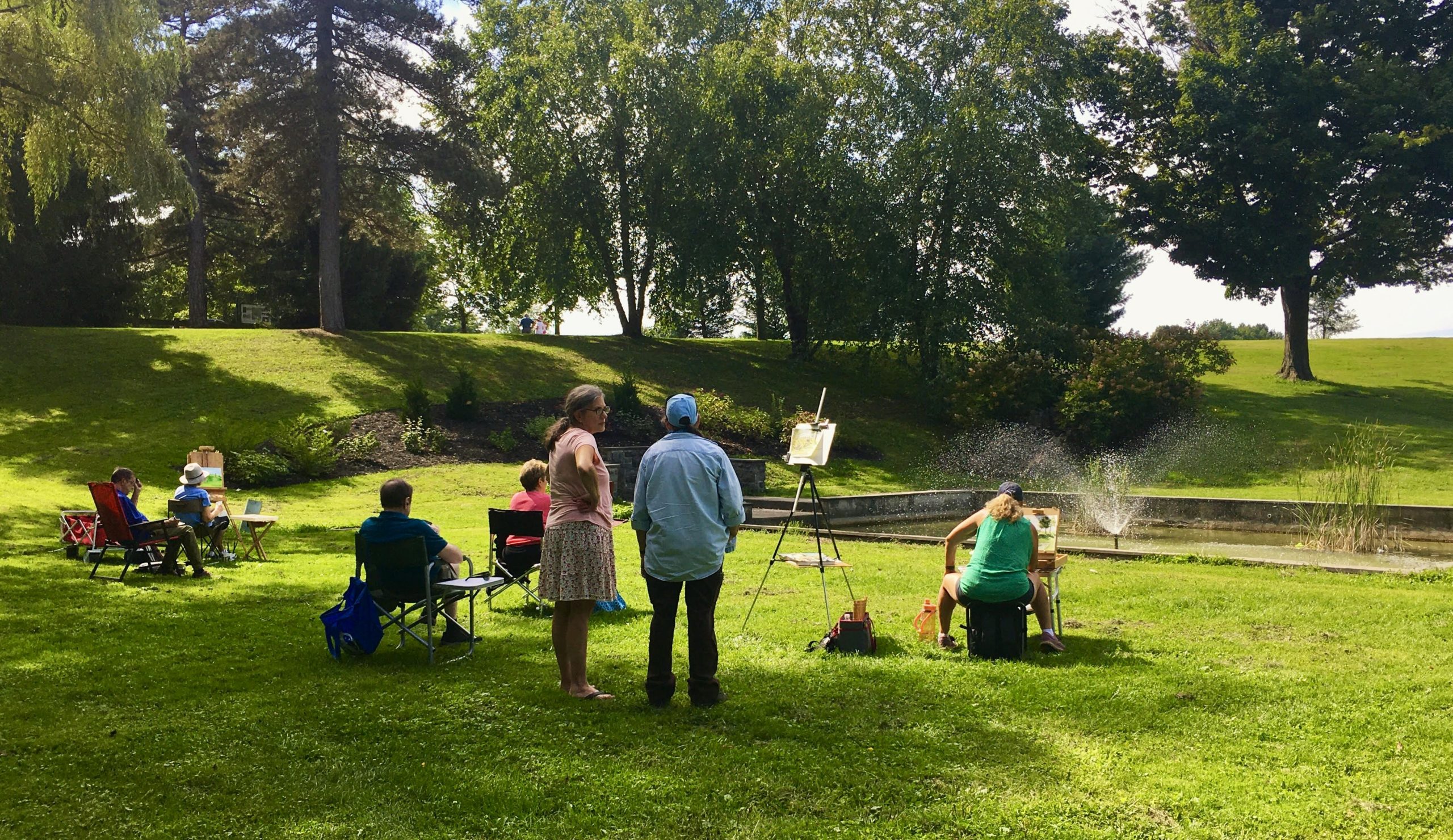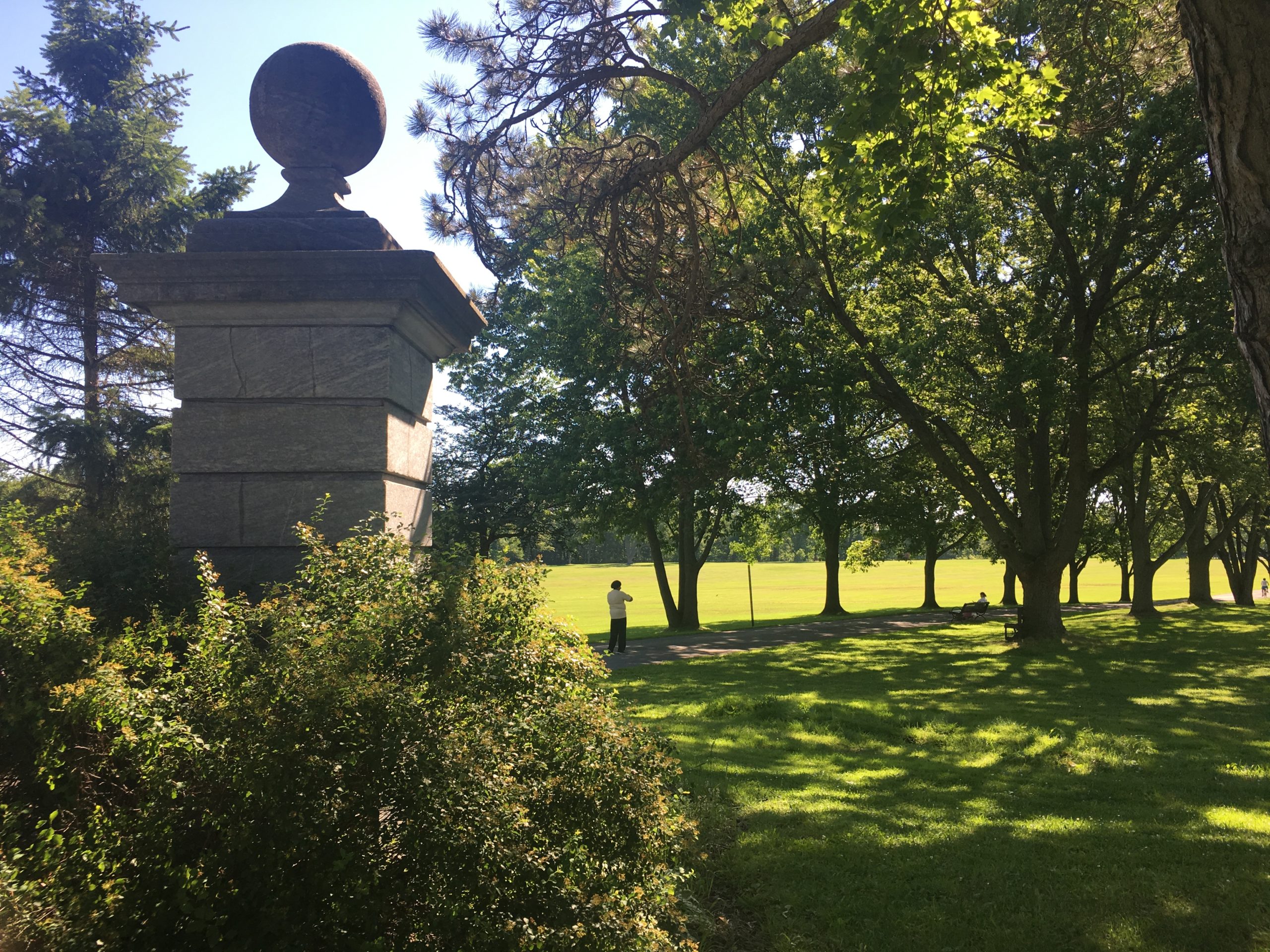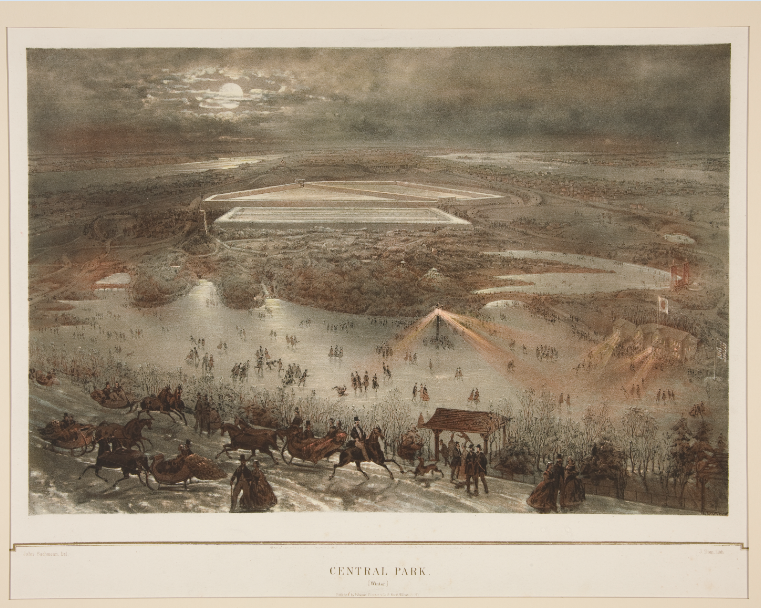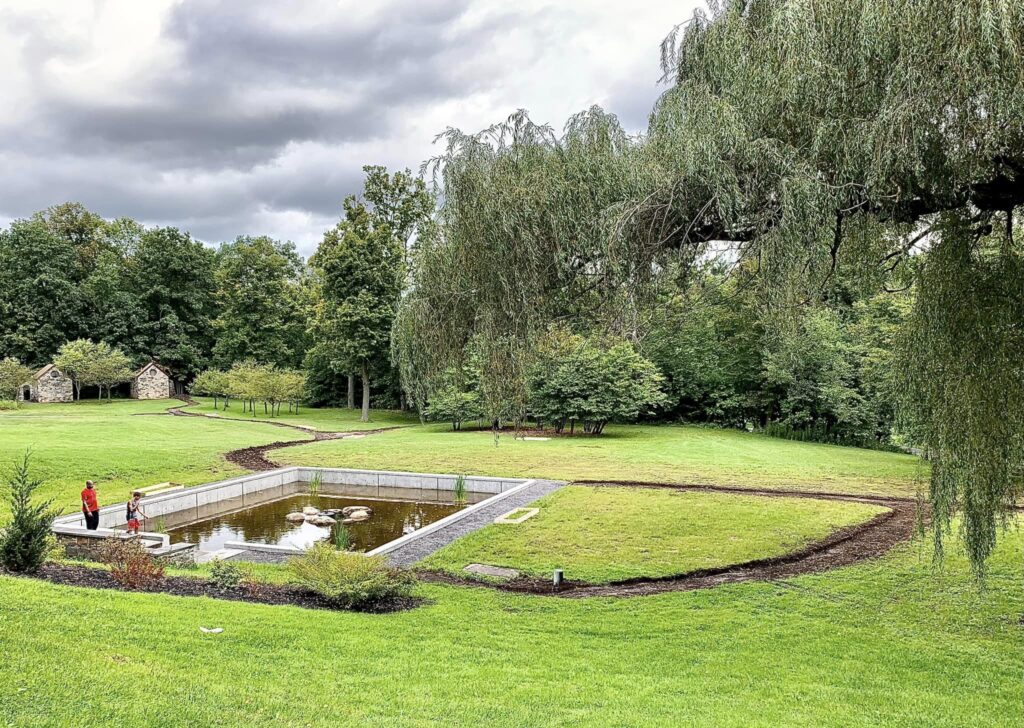
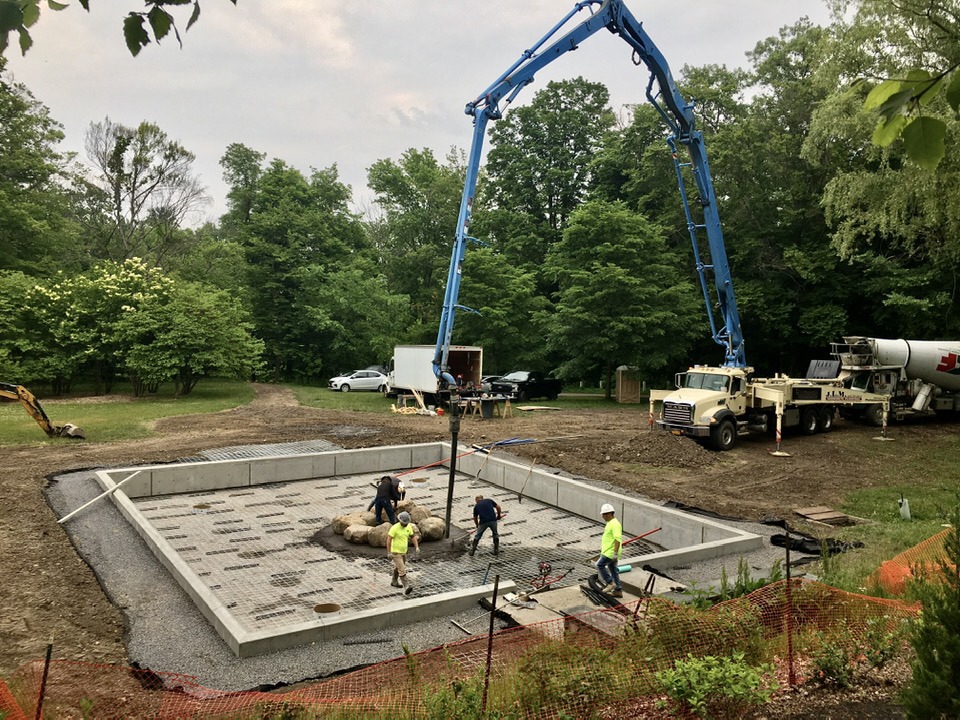
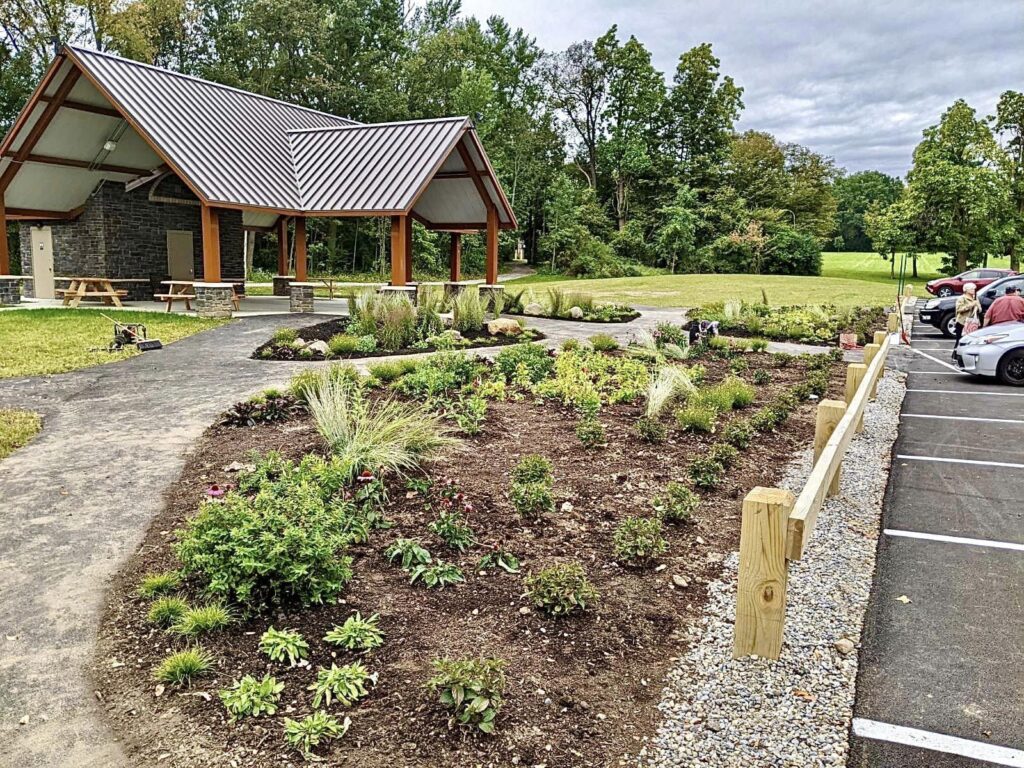
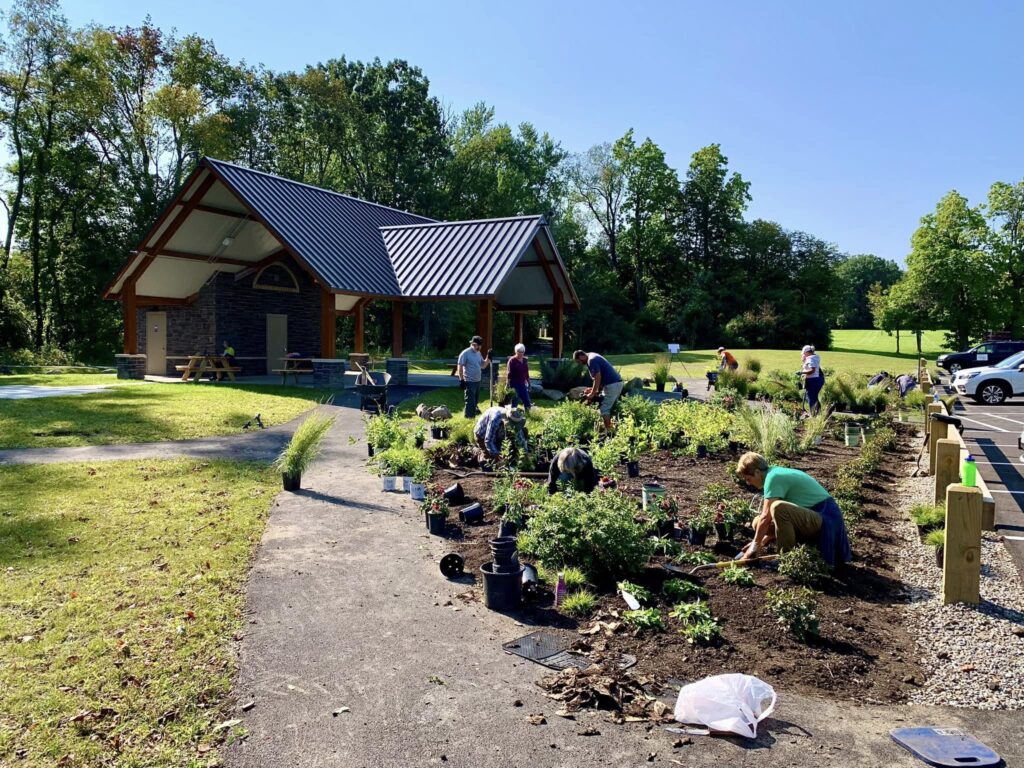
This year was very rewarding for Olmsted City of Greater Utica, New York. This organization’s principal focus at the present time is Utica’s Frederick T. Proctor Park. The park is one of two parks designed by Frederick Law Olmsted, Jr., and his firm, Olmsted Brothers, in Utica, along with a winding parkway that covers 60 acres, and five neighborhoods. F.T. Proctor Park is listed on the National Register of Historic Places, designed by Olmsted, Jr., and built under the supervision of Olmsted Brothers (with E.C. Whiting playing a notable role) in 1912-14.
The Lily Pond, a cement reflecting pool on a plateau between the park’s upper and lower levels, was a key element in Olmsted’s design for the park. Designed and constructed in 1913, the Lily Pond lapsed into degradation in the 1960s and 1970s. Some functional but very basic repairs were carried out about 15 years ago that returned it to service, but it remained in poor shape, had lost much of its charm, and was beyond restoration. Despite its condition, though, the Lily Pond and a nearby staircase made of fieldstones that was also part of Olmsted’s design remained beloved features of Utica’s 630-acre Olmsted-designed parks and parkway system.
After a successful fundraising campaign, and using a design created by the Syracuse firm of Klepper, Hahn & Hyatt (KHH), Olmsted City carried out the reconstruction of the Lily Pond this spring. Although the work was modeled closely on Olmsted’s 1913 design as modified around 1920, it incorporated a number of novel, mostly hidden features. Most notable is a greatly enhanced drainage system around the perimeter of the pool to diminish the impact of seasonal freezing and heaving on the lifespan of this structure.
Olmsted City also asked KHH to design an Olmsted-inspired winding pathway to link previously-disconnected features on and adjacent to the plateau on which the Lily Pond sits. Most notably, this pathway ties the Lily Pond and its staircase together with several paths and features built by the Works Progress Administration (WPA), notably another stone staircase Olmsted City repaired last year and two small stone-construction buildings known as the bathhouses (formerly public restrooms, now used by this organization as storage sheds). Olmsted City also landscaped this path with 120 perennial shrubs, decorative grasses, and trees, as well as benches. Now the area comes together as a coherent whole, a visually-pleasing crossroads in the park.
As an adjunct to these improvements, Olmsted City has already launched a project to rehabilitate paths behind the bathhouses that connect directly onto the new path built this summer, construct a foot bridge over a stream and address water management issues that had rendered one of those older paths semi-derelict, and reconstruct yet another, largely collapsed stone staircase from 1912-14 that likely was partly reconstructed by the WPA during the 1930s.
All of this complements the construction of a new picnic pavilion by the City of Utica (which also built the Lily Pond pathway as an in-kind contribution to that project) a short walk from the Lily Pond and the long-overdue repaving of the nearby parking lot. Olmsted City designed and carried out the planting of four beds in front of the pavilion, all of which will enhance first impressions of the park.
News this September that Olmsted City was awarded a $338,000 USDA Community Forestry Grant to advance the restoration of the park capped off what was already an extremely gratifying year. The grant will enable us to enact a plan to trim existing trees, plant new ones, remove invasives, improve and restore trails, add signage, and carry out a study to determine whether the creation of a catch basin in the park’s lower level is feasible and desirable for water management purposes (it would, if built, also recreate a lost feature of the park, a pond that the WPA removed, ironically, as a water management measure). Olmsted City is grateful not only that its ability to advance its mission will be greatly enhanced by this grant, but that it is one of only 5 non-governmental applicants in New York State to be awarded one of these grants. The stage is set for another busy year!
See the Lily Pond Dedication Booklet here.









